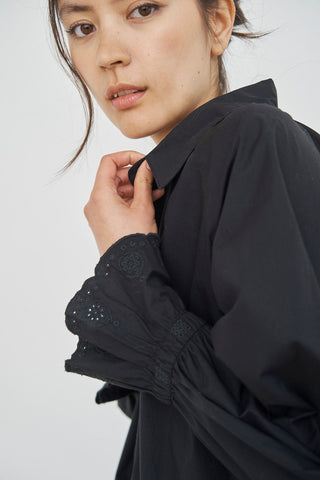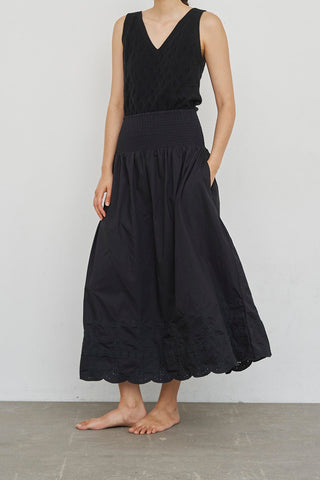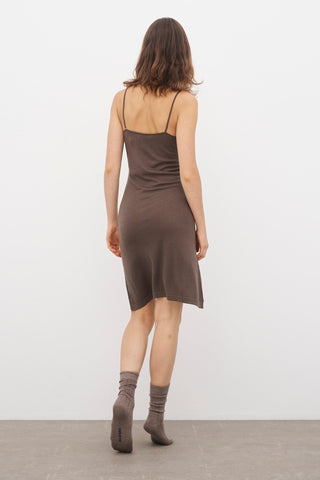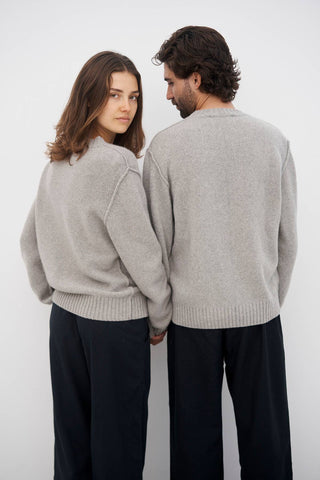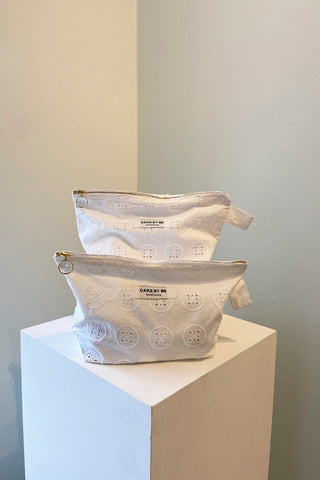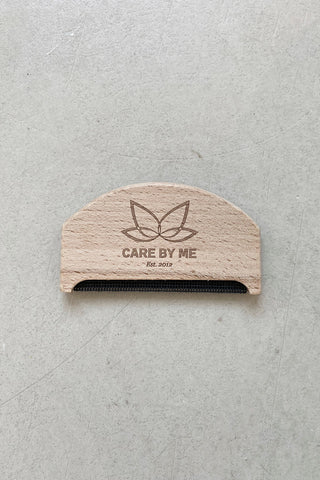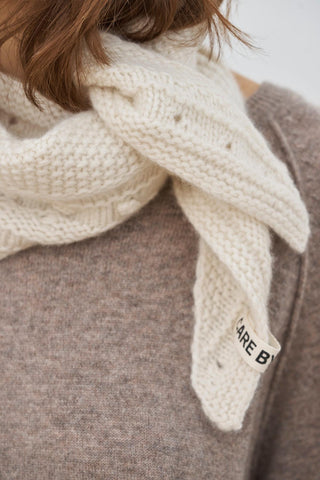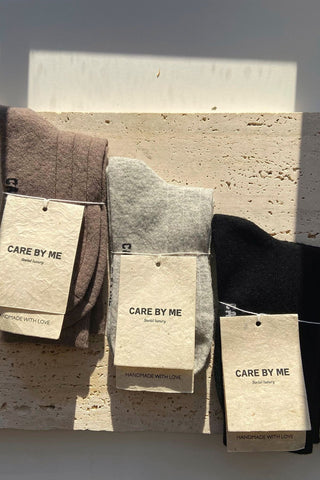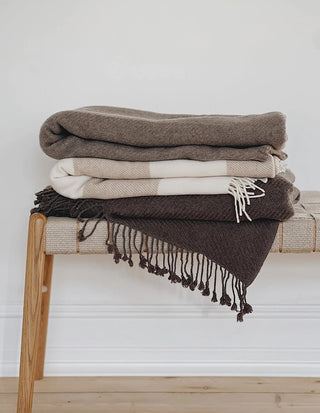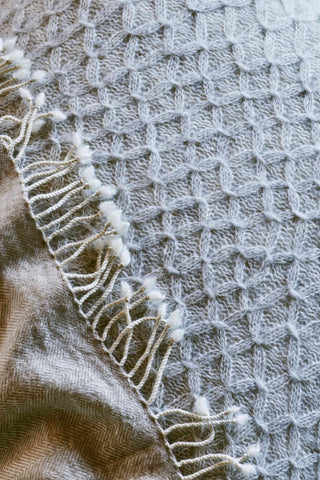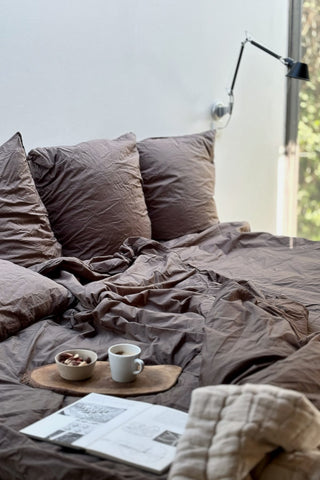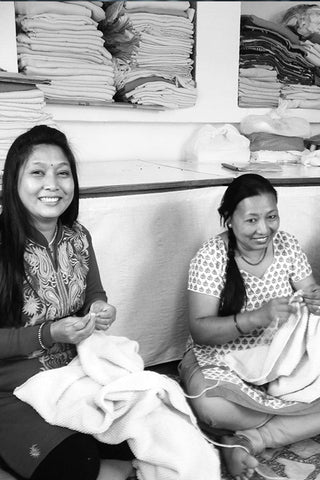
Great project for December fun
Again this year we have created a cozy DIY guide where you can make beautiful and personal Christmas decorations with a focus on recycling.
Last year it was zero-waste drums , the year before that adorable angels made of recycled paper - this year we'll show you how you can transform something as simple as orange peels into a unique, beautiful and more environmentally friendly Christmas decoration - a charming fly agaric in the classic colors of Christmas.
Christmas is the time of year when oranges and clementines fill our homes with their fresh scent and tangy taste. But did you know that in 2019, a whopping 70,000 boxes of oranges, equivalent to 25 million pieces, were shipped to Denmark during the Christmas season alone?
This also means that we produce enormous amounts of orange peels - which often simply end up as waste.
But it doesn't have to be that way. Where someone sees trash, we see creative potential!
With this guide, you will learn step by step how to create decorative Christmas ornaments, small hostess gifts or personal Christmas table decorations. It is not only good for the environment - it is also an ideal opportunity to gather family or friends for a cozy moment, where recycling meets Christmas cheer.
Let's create memories together and make Christmas even greener.
After all, Christmas is about love, community and consideration for each other - and our planet.

This is what you need
- Clementine or orange (clementine is easiest, and that's what we used here)
- Knife
- Paint - white and red (A thick paint is recommended. These are from Hobbylack, and can be purchased in Panduro, among other places)
- Brush
- Cord
- Glue gun
- Tissue paper
- Stick (from the forest)
- Cardboard (preferably recycled from any previous purchases – e.g. a cornflakes package)
- Scissors
- pencil
- ruler
Depending on the expression on the sponge, you can also use
- Glue
- Glitter (e.g. red)
- Dried/pressed flowers
- Different colors of tissue paper
- Experiment with other colors of paint
- Sewing thread
- Beads (as decoration on the string)
Steps 1-3
Cut clementine/orange
Take a clementine or orange and cut it in half.
Separate the peel from the flesh
To loosen the flesh from the peel, gently press your fingers down between them and rotate around, slowly working your way down until the flesh is completely free from the peel. You can now enjoy eating the clementine while continuing to be creative with the peel.
Drying clementines
Let the clementine peel dry - preferably on a windowsill or on a radiator. If you want to make more (or just one extra), we recommend that you also dry the other half of the clementine (without the flesh) so you don't have to repeat the drying process.

Steps 4-6
Paint
Paint the peel red on the outside (the orange side). You can also paint the bottom and the inside start of the peel for a nicer finish.
Drying paint
Judge for yourself when the red paint is dry enough for you to paint white dots on top.
Hole in clementine
Carefully make a small hole in the top of the peel with the tip of a pair of scissors. The hole should be large enough for the two ends of the string to pass through. If you want the string to be "invisible," you can use sewing thread. In that case, the hole should be very small.

Steps 7-9
Cord suspension
Tie the two ends of the string together to form a knot that is large enough that it cannot pass through the hole. Consider the length of the string depending on where you want the mushroom to hang (a typical length is about 25 cm, folded in half). Pass the top of the loop (string) through the hole so that the knot is inside the peel.
Cardboard
Take your cardboard and draw the size of the clementine peel. Cut it out and adjust it so that it fits exactly into the peel. If the tissue paper is slightly transparent, the cardboard should have a blank side (no print).
Hole in cardboard
Use the tip of your scissors to carefully make a hole in the center of your round piece of cardboard. The hole should be just big enough for the stick (from the forest) to just fit through. The hole should not be too big, as the stick should be firmly attached to the cardboard. The neat side of the cardboard should face the long side of the stick.

Step 10
Tissue paper
Expression 1: Measure approx. 15x15 cm (depending on the desired expression) on your tissue paper and cut it out. Fold the tissue paper in half and then in half again, so that you get a triangle that marks the middle of the paper. Cut a small hole in the tip and unfold the tissue paper again.Expression 2: Draw about 2 cm around the peel to form a circle. Fold and cut a hole in the same way as in expression 1.

Step 11
Slats
(The stick has been temporarily removed from the cardboard)
Expression 2: Place the small hole on the nice side of the cardboard and fold the ends behind the back of the cardboard. You can optionally make some wrinkles to create more shape like slats.

Step 12
Glue gun
Turn on the glue gun and glue the knot (string) so that it is secure. Also glue the tip of the stick that is attached to the cardboard. Finally, glue along the edge of the tissue paper (cardboard) and insert it into the clementine peel. Remember to work quickly, as the glue dries quickly.
If you want, you can add a little glitter to the edge of the peel, put a dried flower on it, etc.

The fine mushrooms and the guide are made by our talented marketing assistant Laura Aller.










